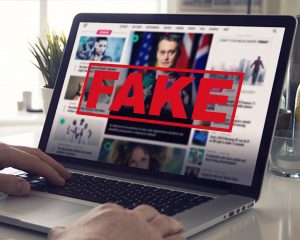What is tachlash?

In The Economist’s annual special issue, “The World 2018,” 2017 is referred to as the year of “Techlash “. It is a word that The Economist coined in 2013 from Backlash, meaning the suppression of tech giants at the national policy level (D. B. R. D. Atkinson, 2019). There is a growing perception that the monopoly status of giant technology companies like Google, Amazon, Facebook, and Apple is eroding the rules of market competition and wealth distribution on which capitalism and free economies are based (King, 2019). In a New Yorker feature, noted journalist Elizabeth Kolbert said, “Technology has changed the way information flows …… Control has fallen into the hands of a tiny fraction of companies …… The concentration of power concentration is subverting our democracy (Kolbert, 2017).” Unlike a decade or so ago, weak Internet companies were disruptors, like teenagers who challenged the evil dragon . Today’s Internet giants, however, have become the “dragons” themselves, increasingly giving the public the impression of evil. Whether it is Google being sued, Zuckerberg going to hearings, or Amazon’s new headquarters being boycotted, the impression of evil has become a negative image of these tech giants.
What are the hidden problems behind the public’s concerns about tech giants?
1.Tech monopoly
Google is the public’s first choice for a quick search, and users have subconsciously developed the habit of searching the Internet first for any problem they encounter. But users are prevented from using a search engine that connects them to all the content on the Internet? This is because the algorithms on sites like google determine what users read, listen to and watch.

It is easy to forget that these platforms are not public forums, but technology companies. And that’s what drives their decisions. With only a few large companies dominating the search engine, social media and online shopping markets, the general feeling is becoming a resistance. Google will be the first to put information about investing in businesses to guide users to think, judge and consume.
On the other hand, the tech giants use their strong position in the market to make unequal rules, crowding out smaller companies and making it impossible for competitors to survive, which will at the same time undermine social media pluralism. At the same time, this also reduces the user’s choice of websites to use.
2.Filter bubble (algorithmic recommendation)

In 2011, Eli Pariser mentioned the concept of “filter bubble” in his book “Don’t Let the Algorithm Control You”, which suggests that users’ search and browsing traces on the Internet will be recorded, and based on these clues, user preferences will be formed, and based on the judgment of the recommendation algorithm, information will be pushed to the user, thus realizing personalization of the user. Based on these clues, user preferences are formed and based on the recommendation algorithm, information is pushed to users, thus realizing personalized information customization and ensuring user stickiness (Pariser, 2011). In this process, a series of filters create a unique network environment for users – a “filter bubble”, which isolates users from other information and makes it difficult for them to break through the barriers to find new information.
For example, if a user searches for an iPhone on Amazon Prime, he may find ads for the iPhone and related products on Ins, Google, and YouTube. For example, both search engines, social networks and music and video sites have similar functions to guess the user’s favourite, by collecting his usage habits and other data, intelligent judgment and then correlation, and give him favourite content. This seems to be a beautiful thing, do not need to do anything, the information needed to appear in front of the eyes. But this may not be the case, this intelligent filtering and screening may cause a leaf on the web.
There is a very interesting TED talk by web organizer pioneer Eli Pariser on the “filter bubble” of the web, where the increasingly intelligent, personalized, associative and relevant web may not be a good thing, because it can narrow the public’s view of the world and trap people in a “web bubble”.
Google, and now the Internet, has indeed changed the lives of the public, and we are grateful for that, but a popular dream of the Web needs to introduce new ideas, and new people and different perspectives to its users, rather than isolating all users in an online filter bubble.
3.Misinformation
A side effect of the freedom to post news on social platforms is the rapid spread of “fake news”. The public now has faster access to news than ever before. How can users tell if the article or news they are reading is true? This is difficult. This can be a major problem when articles based on “alternative facts” can influence public opinion and even undermine the democratic process.

In 2016, there was a shooting incident in the Washington, D.C., area that was the result of fake news. A pizzeria called Comet Ping Pong was suddenly hit with fake tweets widely circulated on the internet claiming that the pizzeria was a base for pedophilia by Hillary Clinton and members of her campaign team. The pizzeria’s operators then began receiving threats from right-wing radicals who believed the reports to be true. Although social media subsequently banned pizza-gate-related posts, the threats did not stop there, and more and more people believed the fake news. The incident continued to fester until a criminal brought a rifle into the store and began shooting indiscriminately (Imamura, 2017).
The proliferation of fake news, as media companies have shifted their business models from paper to digital media, making it possible to widely disseminate fake news at a low cost. The Denver Guardian, for example, even includes the local weather forecast in its content. Since fake news attracts a large audience, website operators have easy access to advertisers (Imamura, 2017). This is why websites hosting news stories have the responsibility to monitor and regulate the content shared on their platforms.
How can the government, technology companies and the public regulate and address these situations?
The Government
The main measures taken by the government to address the problems posed by tech giants include legislative restrictions, antitrust investigations, and hefty fines. Meanwhile, the government’s General Data Protection Regulation (GDPR) is the world’s strictest privacy and security law (What is GDPR, 2019). . It has been implemented to protect the privacy and rights of users, strengthening the enforcement and intensity of government regulation. However, the biggest drawback of government control is efficiency. From the discovery of the problem to the start of the review and rulemaking, the action is too slow resulting in not keeping up with the pace of technological innovation. In addition, the legal system differs from country to country, yet technology companies are mostly multinational platforms, making it difficult to implement the policies set by the government. For example, the GDPR enforcement application is limited to EU member states.
Technology companies
Self-regulation is the most effective approach for technology giants themselves. This approach usually falls under the umbrella of “corporate social responsibility”. Corporate self-regulation can help address user needs faster than government regulation and enforcement. However, self-regulation and profit generation conflict. Platform companies, whose primary purpose is to create economic value through business growth and global expansion, find it difficult to ensure that technology companies will monitor themselves fairly and impartially. Without huge incentives, platforms will not be able to enforce self-regulation too strongly.
The Public
First, the public is a large and diverse group, and their regulation can bring together diverse forces and generate discussion among professionals from all walks of life. At the same time, it can provoke the public to think and raise awareness of protecting their rights. Importantly, the participation of civil society can quickly drive the power of public opinion to speed up the regulatory process. However, the role of public regulation is to advise and advocate, and to implement change in a practical way or to require the cooperation of government and technology companies.
Conclusion
In short, the era of blind trust in tech companies is over, and Techlash stems from both consumers who have lost trust in tech giants and governments who are unhappy with the growing power these companies wield. Therefore, both governments, the public and tech companies should regulate this strongly negative situation of Techlash in terms of monopolies and unfair competition, filter bubbles, misinformation.
This work is licensed under a Creative Commons Attribution 4.0 International License.
Reference list
Atkinson, D. B. R. D. (2019, October 28). A policymaker’s guide to the “techlash”—what it is and why it’s a threat to growth and progress. ITIF. https://itif.org/publications/2019/10/28/policymakers-guide-techlash
“Big Tech Companies” by Huzaifa abedeen is licensed under CC BY-SA 4.0
“Fake News – Computer Screen Reading Fake News” by mikemacmarketing is licensed under CC BY 2.0
“Filter Bubble” by cambodia4kidsorg is licensed under CC BY 2.0
Imamura, T. (2017). 19 real events caUSed by fake news in the US. Marubeni Corporation. https://www.marubeni.com/en/research/potomac/backnumber/19.html
Kolbert, E. (2017, August 21). Who owns the internet? The New Yorker. https://www.newyorker.com/magazine/2017/08/28/who-owns-the-internet
King, F. (2019). What is Techlash and what does it mean for the digital industry? Baltic Apprenticeships – UK Tech & Digital Apprenticeships. Retrieved October 10, 2021, from https://www.balticapprenticeships.com/blog/what-is-techlash-and-what-does-it-mean-for-the-digital-industry
Pariser, E. (2011). The filter bubble: What the internet is hiding from you. Penguin UK.
Pariser, E. (2011). Beware online “filter bubbles” [Video]. In TED Talks. https://www.ted.com/talks/eli_pariser_beware_online_filter_bubbles?language=en#t-3746
“Smartphone with cloud of application icons” by MarcelaPalma is licensed under CC BY-NC-SA 2.0
What is GDPR, the EU’s new data protection law? (2018, November 7). GDPR.Eu. https://gdpr.eu/what-is-gdpr/